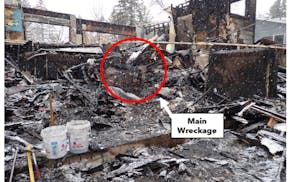Life insurance isn't a one-time decision. Although for most of us, that's how we treat it. After we had our first child, my husband and I purchased two small term life insurance policies to supplement the small group policies we received from our employers. It felt like more than enough at the time.
Fast forward a decade and we make more money, and have more kids and far higher expenses. When I paid the premium last month, I realized the policies that once felt unfathomably large couldn't replace my salary for a single decade. Plus today's low interest rates mean we'd need even more money set aside in a safe investment to cover living expenses and not run out of money.
Individual life insurance policy ownership is on the decline. In the 1960s, nearly three in four U.S. households owned an individual policy, according to the Household Trends in Life Insurance report from LIMRA, the life insurance industry's research arm. In 2010, just 44 percent of households surveyed owned such a policy.
The Great Recession is oft-cited for why many Americans have opted not to buy a policy, or to let an existing policy lapse. But an even bigger trend is the root cause, says LIMRA spokesman Mark Morris. In 1900, 75 percent of Americans died before the age of 65. Today, 75 percent of Americans live to celebrate their 65th birthday. So the fear of leaving family members destitute in the event of premature death has been replaced by the concern of being a financial burden to family members in old age.
Yet we still feel vulnerable. When asked, 58 million U.S. households admitted needing more life insurance. So what's holding us all back? Is it a fear of needles? (Most policies require a health exam.) A belief we're invincible? Here are the five reasons why we don't have adequate life insurance.
Misperception of cost. Two-thirds of Americans believe life insurance is too expensive, according to the 2014 Insurance Barometer Study from LIMRA and Life Happens, a nonprofit formed by insurance companies to educate Americans about life insurance. But if you're healthy and in your 20s or 30s, a policy can cost less than a dollar per day. Need I mention the cost of the proverbial daily latté? Pushing 40, now's a good time for us to revisit our policies, Morris said. "The younger you are, the better your rate is going to be."
Inertia. Insurance purchases are prompted by life events. Buying a house. Getting married. Having babies. Day-to-day, our money conversations tend to revolve around household expenses and short-term wants or needs. Dreaming of a winter vacation, and doing some legwork to decide if that dream can come true, is far more pleasant than having a conversation about how much insurance would be needed to replace the income of a spouse who probably won't die young.
(This is one benefit of having an independent insurance agent or financial planner who can nudge us to have the big-money conversations that otherwise would be swept to the side.)
Competing expenses. This is the big one. It can be argued that families with kids at home have the most pressing need for life insurance. But families with kids at home are in a pricey life stage, forever juggling costs of child care, sports and keeping the pantries stocked with the looming twin terrors of college and retirement. So it can be hard to prioritize protection, especially in a slow economy. But insurance is critical because of the economy, says Marvin Feldman, president and CEO of Life Happens. "It's more important to maintain insurance when you don't have additional resources coming in," he explained.
There are different types of life insurance with varying levels of expense. The most affordable is term life insurance, which covers a person over a certain number of years, and is a good product to start with for families worried about the expense.
Complexity or confusion. How much insurance do I need? And what do all those complex insurance words mean? New research from LIMRA and consultant Maddock Douglas Research discovered 19 million "stuck" life insurance customers — people who started researching insurance and failed to purchase because they were overwhelmed by too much information or frustrated by opaque technical lingo. Can you explain what ''annuitize'' means in accurate detail? Most focus-group participants couldn't either.
A disconnect. Nearly 4 in 10 respondents in the Barometer study said they don't trust insurance companies. That's a lingering issue stemming from the financial crisis. Making policies easy to understand is one step toward rebuilding trust.
But so is rethinking the way policies are explained and sold. After 1,500 interviews, the LIMRA/Maddock Douglas researchers pinpointed another major hurdle for trusting insurers: A feeling that companies lack authenticity when communicating products and benefits.
One thing that's always bothered me is the common tactic to use tears and fears to sell policies. If you think about it, buying an insurance policy is an act of love. The insurance industry needs to do a better job connecting with its customers so we can do a better job protecting our families.
Kara McGuire is a personal finance expert and consumer strategist for CEB. Send questions, comments or ideas for future columns to kara@karamcguire.com.

Ramstad: Readers see early signs of tariffs and miss printed stock tables
Trump tariffs created a volatile market, which comes with big opportunities

Trump tariffs whipped up a deluge of financial advice. Here's how to interpret it.

For some Minnesotans, air disasters trigger increased fear of flying and less travel
